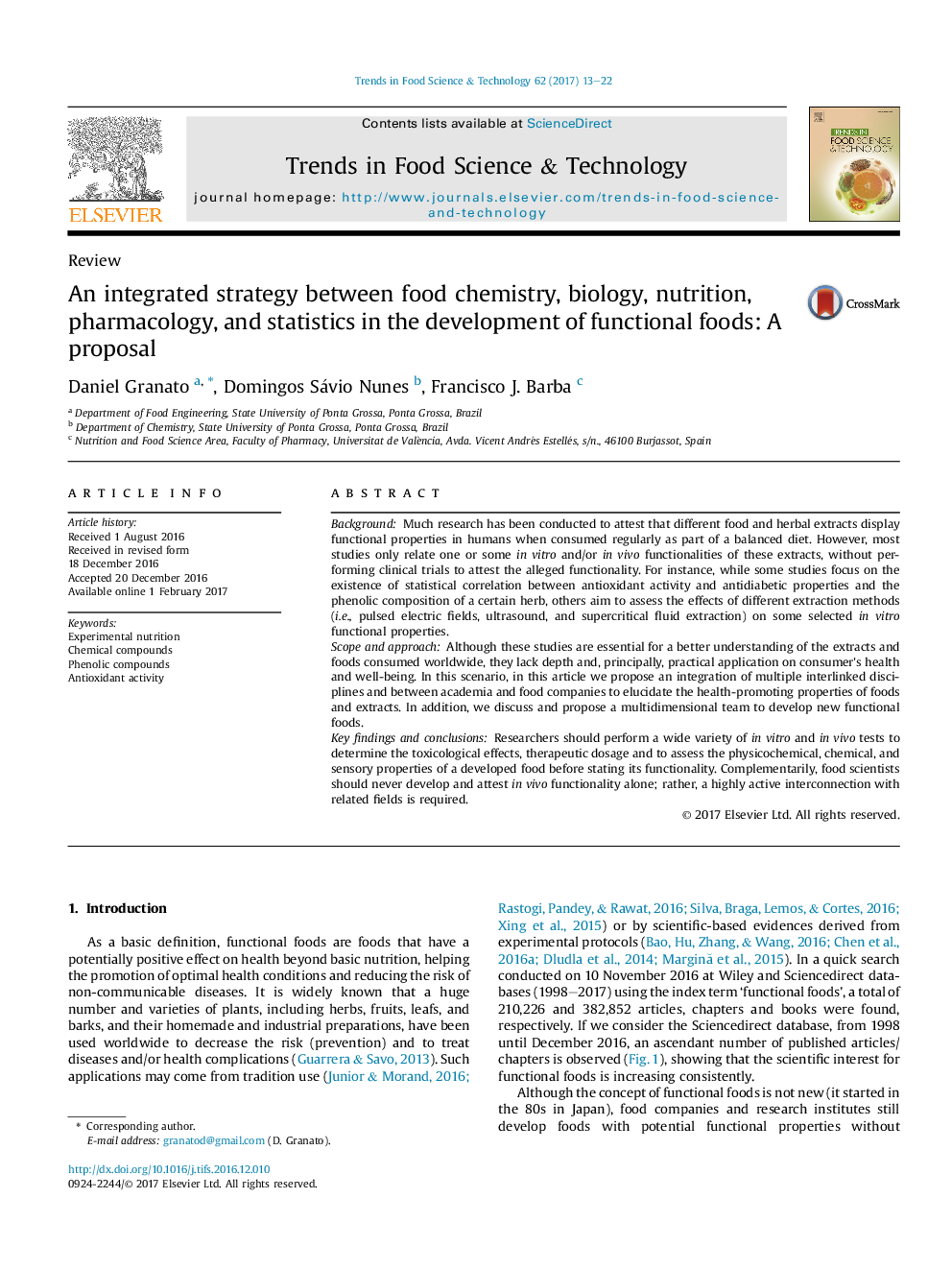| Article ID | Journal | Published Year | Pages | File Type |
|---|---|---|---|---|
| 5523641 | Trends in Food Science & Technology | 2017 | 10 Pages |
â¢Functional foods have been studied and developed worldwide.â¢In vitro and in vivo studies are necessary to attest functionality of foods and extracts.â¢Functional food allegations must be based on scientific data.â¢The role of multidisciplinary studies is explained and integrated in this paper.
BackgroundMuch research has been conducted to attest that different food and herbal extracts display functional properties in humans when consumed regularly as part of a balanced diet. However, most studies only relate one or some in vitro and/or in vivo functionalities of these extracts, without performing clinical trials to attest the alleged functionality. For instance, while some studies focus on the existence of statistical correlation between antioxidant activity and antidiabetic properties and the phenolic composition of a certain herb, others aim to assess the effects of different extraction methods (i.e., pulsed electric fields, ultrasound, and supercritical fluid extraction) on some selected in vitro functional properties.Scope and approachAlthough these studies are essential for a better understanding of the extracts and foods consumed worldwide, they lack depth and, principally, practical application on consumer's health and well-being. In this scenario, in this article we propose an integration of multiple interlinked disciplines and between academia and food companies to elucidate the health-promoting properties of foods and extracts. In addition, we discuss and propose a multidimensional team to develop new functional foods.Key findings and conclusionsResearchers should perform a wide variety of in vitro and in vivo tests to determine the toxicological effects, therapeutic dosage and to assess the physicochemical, chemical, and sensory properties of a developed food before stating its functionality. Complementarily, food scientists should never develop and attest in vivo functionality alone; rather, a highly active interconnection with related fields is required.
Graphical abstractDownload high-res image (201KB)Download full-size image
